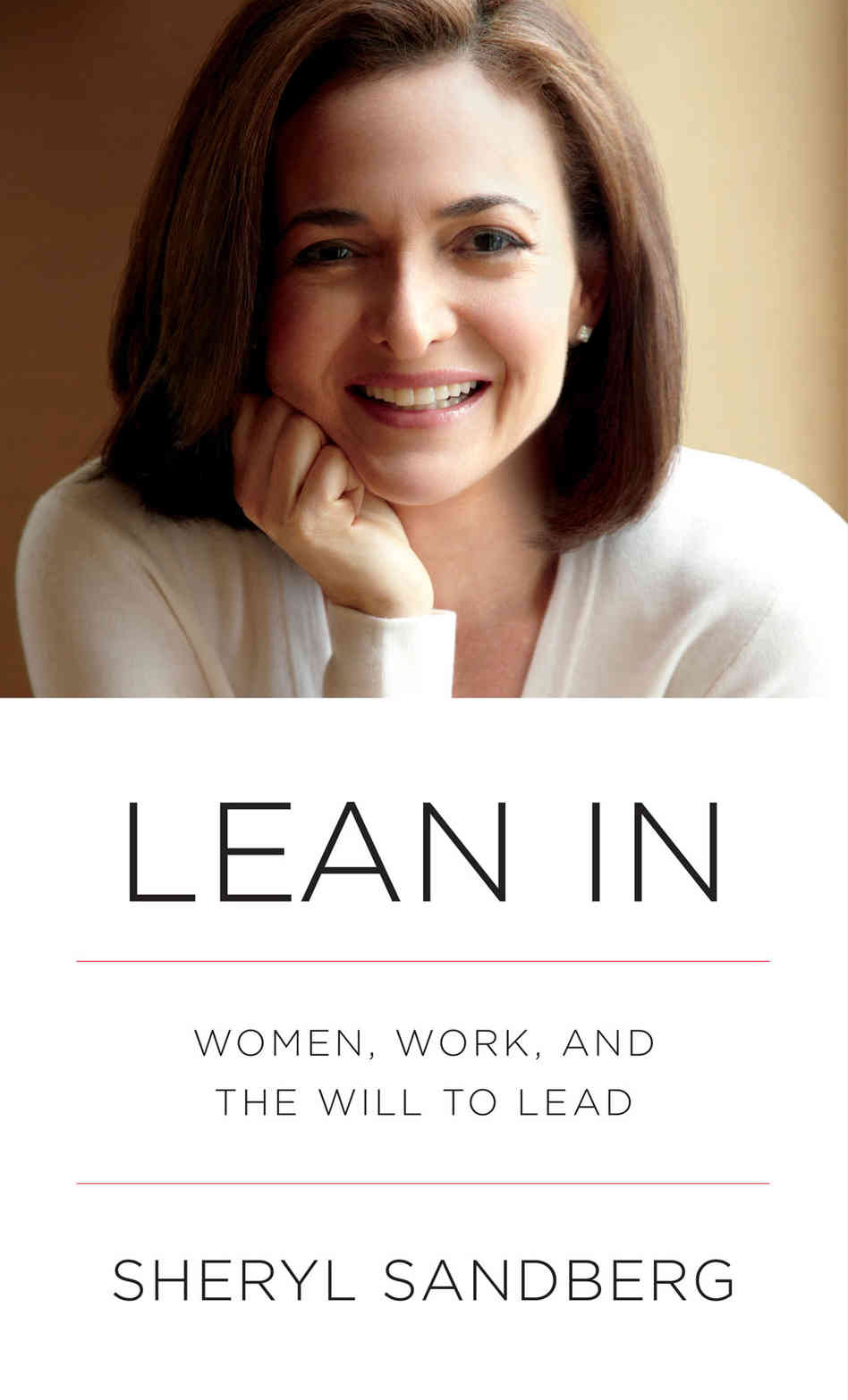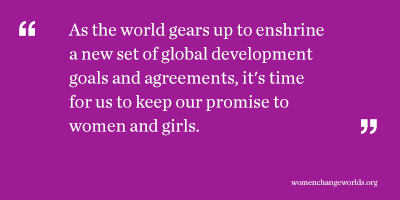
One of the things I like best about Sheryl Sandberg’s new book, Lean In: Women, Work, and the Will to Lead, is something she says on page 9. Addressing the debate about whether the key to increasing women’s access to power lies in removing “internal barriers” or “institutional barriers,” she writes, “Both sides are right. So rather than engage in philosophical arguments over which comes first, let’s agree to wage battles on both fronts. They are equally important.” I couldn’t agree more.
As the Executive Director of the Wellesley Centers for Women, a social-change oriented women-and-gender research and action institute that works on both sides of the coin--systemic factors and individual factors--when it comes to issues of gender equality and women’s and girls’ wellbeing, I know--and WCW has known collectively for nearly 40 years--that these issues exist both because of what society has set up as unfair parameters and because of how individual people think. And these thoughts include women’s thoughts about themselves, what Sandberg refers to as “internal barriers.”
We all know women who do lean in and succeed, and we know many others who have been leaning in but haven't been able to secure a space at the table. We know that it's not just a matter of will and desire, but the opportunities as well as our perseverance. This is why leaning in for social change-–indeed, for full social equality--is so important.
Sandberg shows real insight when she points out that “personal choices are not always as personal as they appear” and notes that “we are all influenced by social conventions, peer pressure, and familial expectations.” She is rightly acknowledging, as much research has shown before her, that our thinking is often constrained by the social context as well as “demand characteristics” in the environment that overdetermine our tendencies to think (or feel) one way or another. And much of this is unconscious.
The role of research is to bring our unconscious tendencies to light, so that all of us can contribute to the individual and societal self-corrections that add up to social change. I applaud Sheryl Sandberg for incorporating so much research into her book (a full 33 pages of footnotes, to be exact), particularly highlighting the  life-changing impact of our own Peggy McIntosh’s theoretical insights on her own understanding of how women feel like a fraud, mentioning the Wellesley Centers for Women and Wellesley College by name, mentioning the NICHD Study of Early Child Care on which two of our senior researchers worked, and working closely with sociologist Marianne Cooper at our sister organization, the Clayman Institute for Gender Research at Stanford, to provide much of the statistical data that supports her arguments.
life-changing impact of our own Peggy McIntosh’s theoretical insights on her own understanding of how women feel like a fraud, mentioning the Wellesley Centers for Women and Wellesley College by name, mentioning the NICHD Study of Early Child Care on which two of our senior researchers worked, and working closely with sociologist Marianne Cooper at our sister organization, the Clayman Institute for Gender Research at Stanford, to provide much of the statistical data that supports her arguments.
A cornerstone of Sandberg’s social change recommendations center around increasing women’s access to power and women’s leadership in arenas of power. In perhaps what is the book’s most famous recommendation (and the source of its title), she states, “I believe that if more women lean in, we can change the power structure of our world and expand opportunities for all.” Her concern with women’s leadership is the book’s animating anxiety, as evidenced in her statement, “We have to ask ourselves if we have become so focused on supporting personal choices that we are failing to encourage women to aspire to leadership.” I actually like Sandberg’s recommendation for women to “lean in to leadership” as a way of advancing gender equality and eradicating sexism, but I would like to expand her notion of what this means by pushing her (and all of us) to consider leaning in on multiple fronts simultaneously.
What I mean is this: In addition to leaning in to end sexism, we need to lean in to end racism that holds women of color back, lean in to end heterosexism that holds LGBT women back, lean in to end xenophobia that holds immigrant women and women of different nationalities and religions back, lean in to ending able-ism that holds women with disabilities back, lean in to ending ageism that holds “women of a certain age” back, and lean in to ending classism which holds women of low socio-economic status as well as women strapped by global poverty back. And we also need to lean in for all of the men and transgender people who are disadvantaged by these same systems. Leaning in is intersectional! And there’s room for everyone to lean in somewhere.
There’s also one more comment I’d like to make about the notion of leadership. Sandberg echoes and applauds the comments of recent Nobel laureate Leymah Gbowee, who stated decisively that what we need to make a difference on all these issues is “more women in power.” We tend to think of power as being at the pinnacle of a hierarchy, whether that hierarchy is governmental, corporate, professional, or even among celebrities. But, as feminist theorist Audre Lorde has pointed out, there are two kinds of power--“power over” and “power with.”
“Power over” reproduces the very hierarchies and their inevitable violence that we are trying to escape, whereas “power with” is invitational and transformative, linking agents of change together in service of a common idea or aspiration. In fact, it resonates with the definition of success that Sheryl Sandberg attributes to Harvard Business School Dean Nitin Nohria, namely, “Leadership is about making others better as a result of your presence and making sure that impact lasts in your absence.”
While I will not deny that, within our current world system, having more women in “traditional” positions of power is a good thing, we need to give more credence and visibility to women--and men and transpeople--who are leaders in the “power with” vein. In fact, we need to educate our children, one and all, about how to lead using “power with.” A recent study by political scientists Mala Htun and S. Laurel Weldon drives this point home even further: In a study of 70 countries over a 30-year span, these authors found that advancement in policies to end violence against women were explained by the presence of active, autonomous feminist movements and organizations ("power with") and not the presence of female leaders ("power over") per se. And they further found "that autonomous movements produce an enduring impact on VAW policy through the institutionalization of feminist ideas in international norms."
I am thankful for all the attention that Sandberg gave to the importance of men sharing household and family duties with women as well as being accountable for the pro-women policies they create in the workplace as well as in law and policy. She rightly points out that, “Any coalition of support must also include men, many of whom care about gender inequality as much as women do.” It is worth noting that many of these men are the sons and grandsons of the proverbial “feminists from the 60s and 70s,” highlighting a generational change in attitudes, an often overlooked achievement of the second-wave feminist movement, or “women’s lib.” This article by Kunal Modi, “Man Up on Family and Workplace Issues,” which she cites, is a worthwhile read. Sandberg also applauds lesbian and gay couples for the level of equity they demonstrate with regard to sharing household duties, suggesting that heterosexual couples and families could learn a thing or two from their LGBT counterparts.
There’s no doubt that Sheryl Sandberg’s new bestseller Lean In has generated considerable buzz and controversy. The issues she addresses are front and center in many people’s lives. Although her perspective is heavily race-d and class-ed, she acknowledges this with fairness. Having now read the book cover to cover, I find myself wishing that fewer people would spend so much time searching for the flaws in her perspective and more people would take up her challenge to “work together toward equality.” From my perspective, Sheryl Sandberg’s Lean In is a real clarion call for those of us who are working on issues that will improve women’s lives--professional and otherwise--to join forces, be more systematic and strategic about our change work, and to align efforts. Equipped with a both/and perspective that acknowledges both societal and individual impediments to gender equality and women’s empowerment, I would love to see more of us just lean in to social change.
Layli Maparyan, Ph.D., is the Executive Director of the Wellesley Centers for Women at Wellesley College.
When you subscribe to the blog, we will send you an e-mail when there are new updates on the site so you wouldn't miss them.
Comments